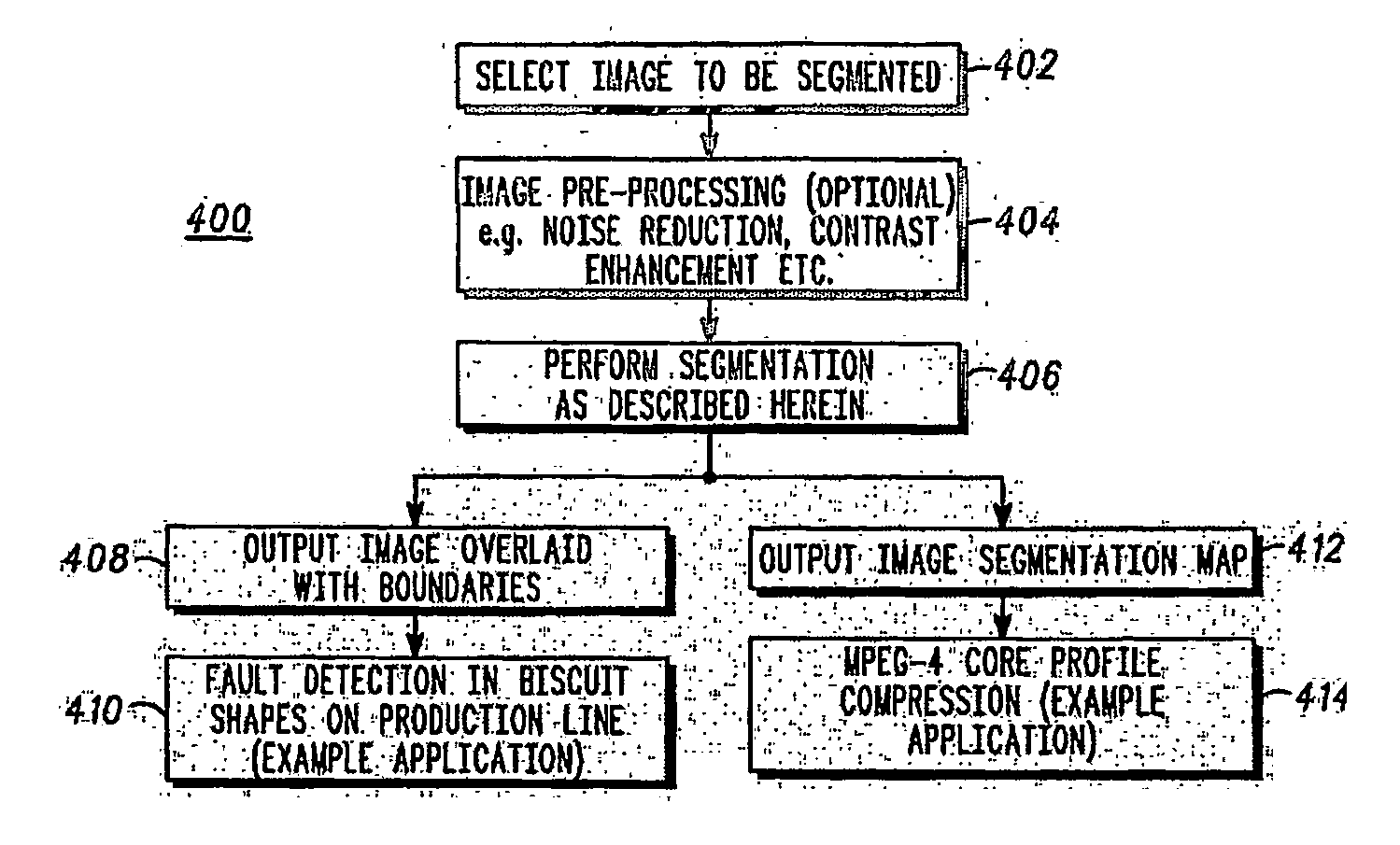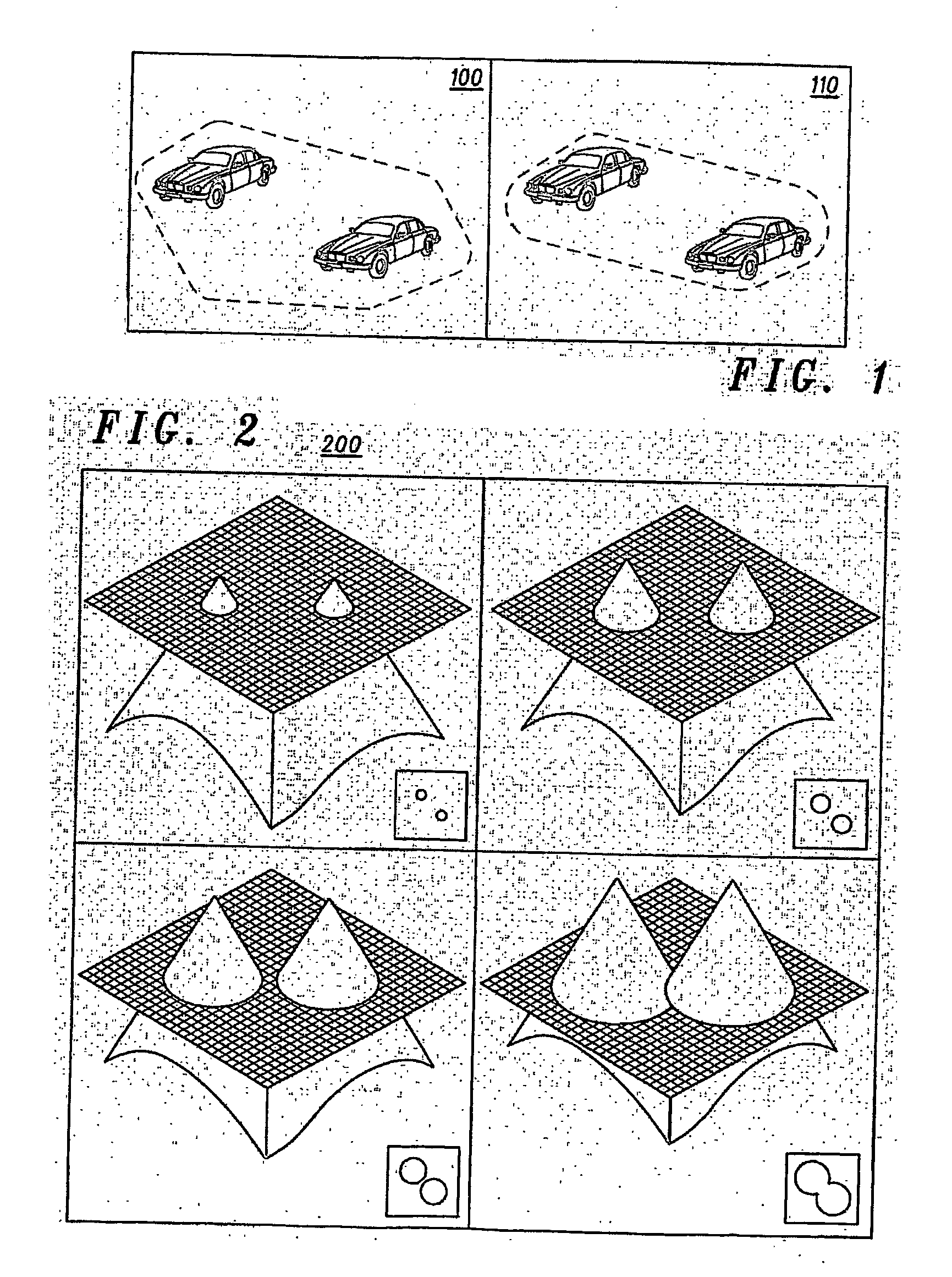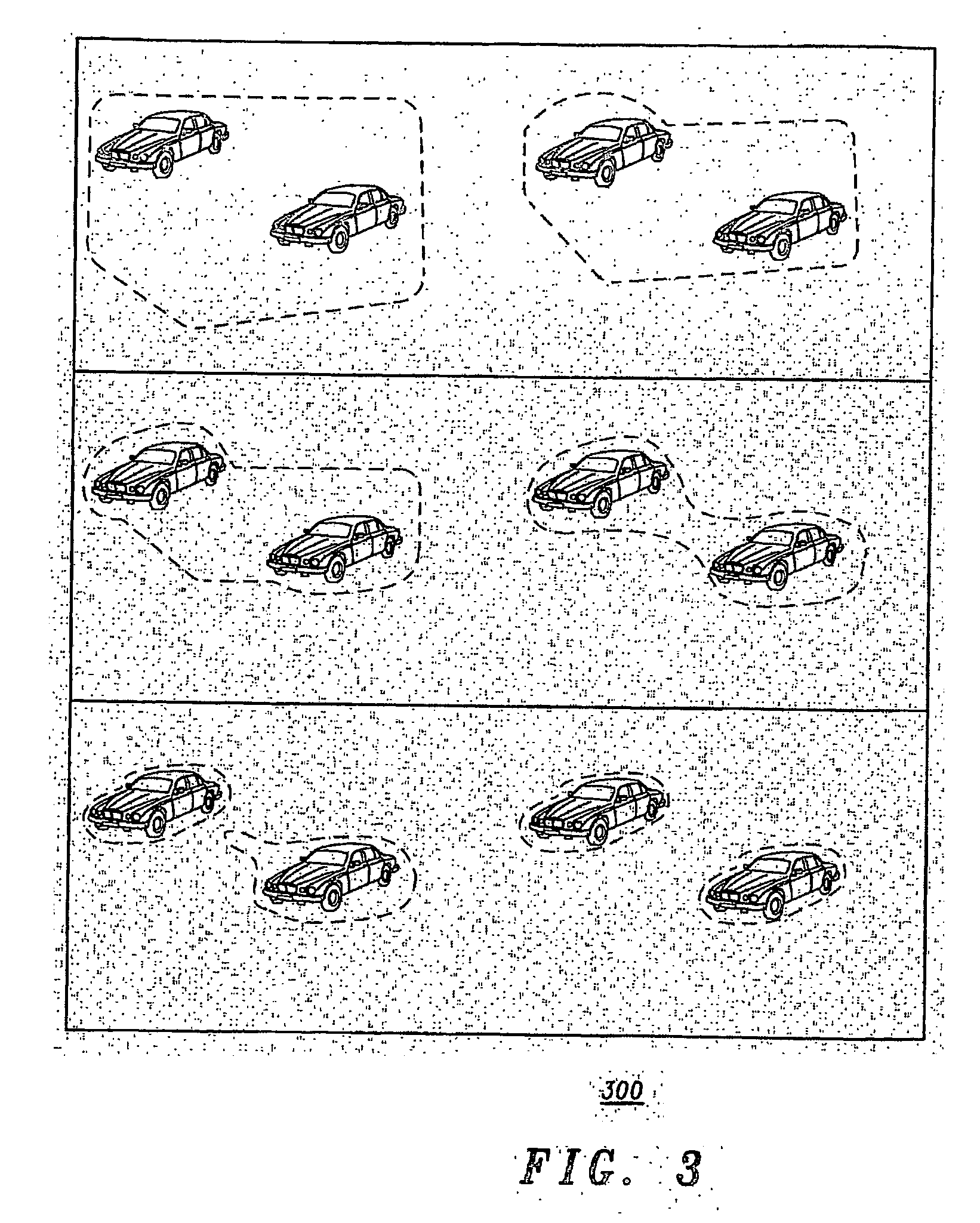Method for segmenting an image and an image transmission system and image transmission unit therefore
a transmission system and image technology, applied in image enhancement, image analysis, instruments, etc., can solve the problems of inflexibility, segmentation is one of the key problems, and the system is known to be inflexible, and the inflexibility extends
- Summary
- Abstract
- Description
- Claims
- Application Information
AI Technical Summary
Benefits of technology
Problems solved by technology
Method used
Image
Examples
Embodiment Construction
[0056] The preferred embodiment of the present invention is essentially a process of image understanding and interpretation, by means of segmenting regions within an image. In summary, the inventive concepts of the present invention, as described below, overcome the limitation of the prior art approaches by re-formulating the Region Competition algorithm inside a Level Sets framework. The preferred region model is generalised to a non-parametric case. In this manner, the preferred embodiment benefits from advantages of the respective individual methods.
[0057] Advantageously, the algorithm of the present embodiment is able to solve N-class segmentation problems where N can be greater than two, using just one embedded surface. This is achieved by the region control, which controls the merging and splitting behaviour of the zero level set by means of the contour speed function. This is done in accordance with the Region Competition cost functions and the state of the embedded surface....
PUM
 Login to View More
Login to View More Abstract
Description
Claims
Application Information
 Login to View More
Login to View More - R&D
- Intellectual Property
- Life Sciences
- Materials
- Tech Scout
- Unparalleled Data Quality
- Higher Quality Content
- 60% Fewer Hallucinations
Browse by: Latest US Patents, China's latest patents, Technical Efficacy Thesaurus, Application Domain, Technology Topic, Popular Technical Reports.
© 2025 PatSnap. All rights reserved.Legal|Privacy policy|Modern Slavery Act Transparency Statement|Sitemap|About US| Contact US: help@patsnap.com



